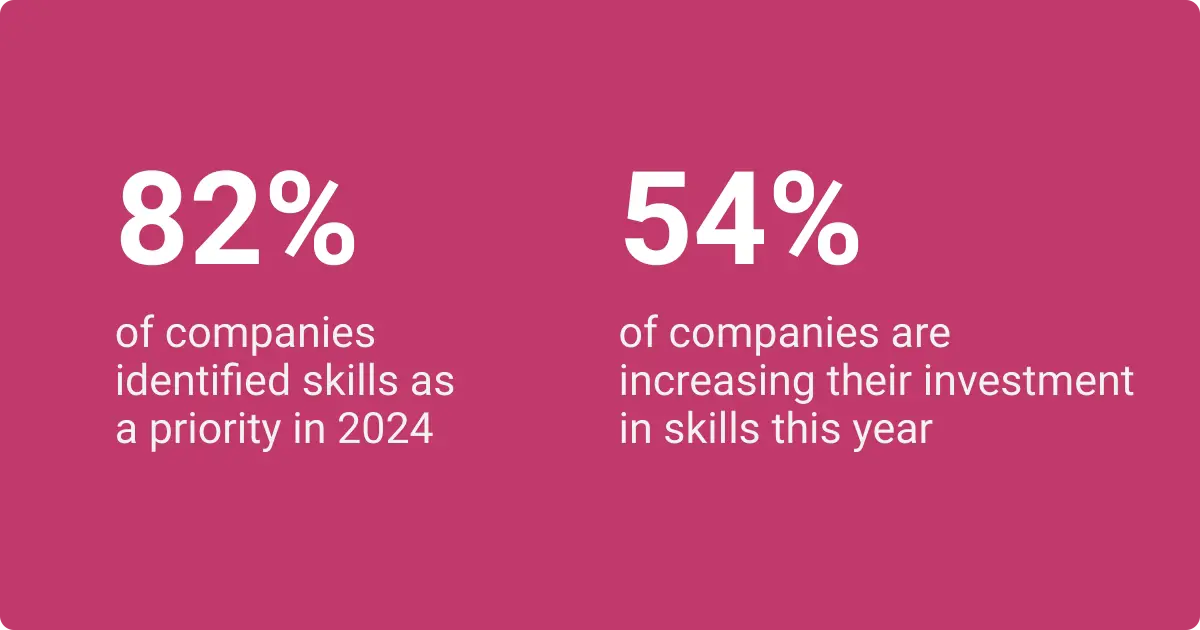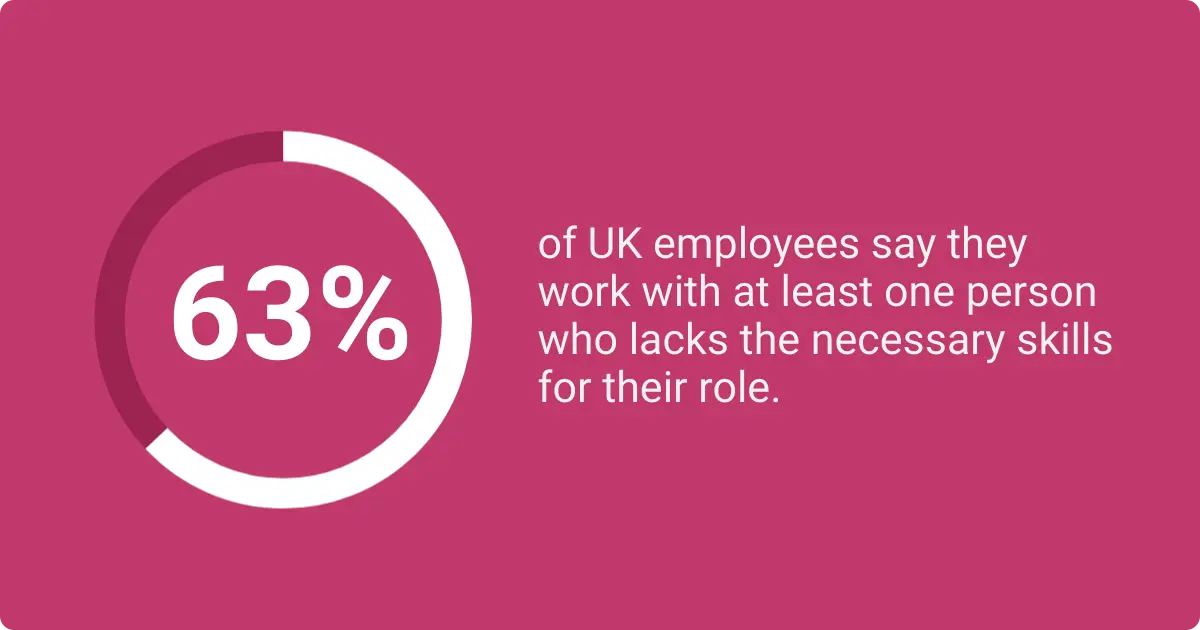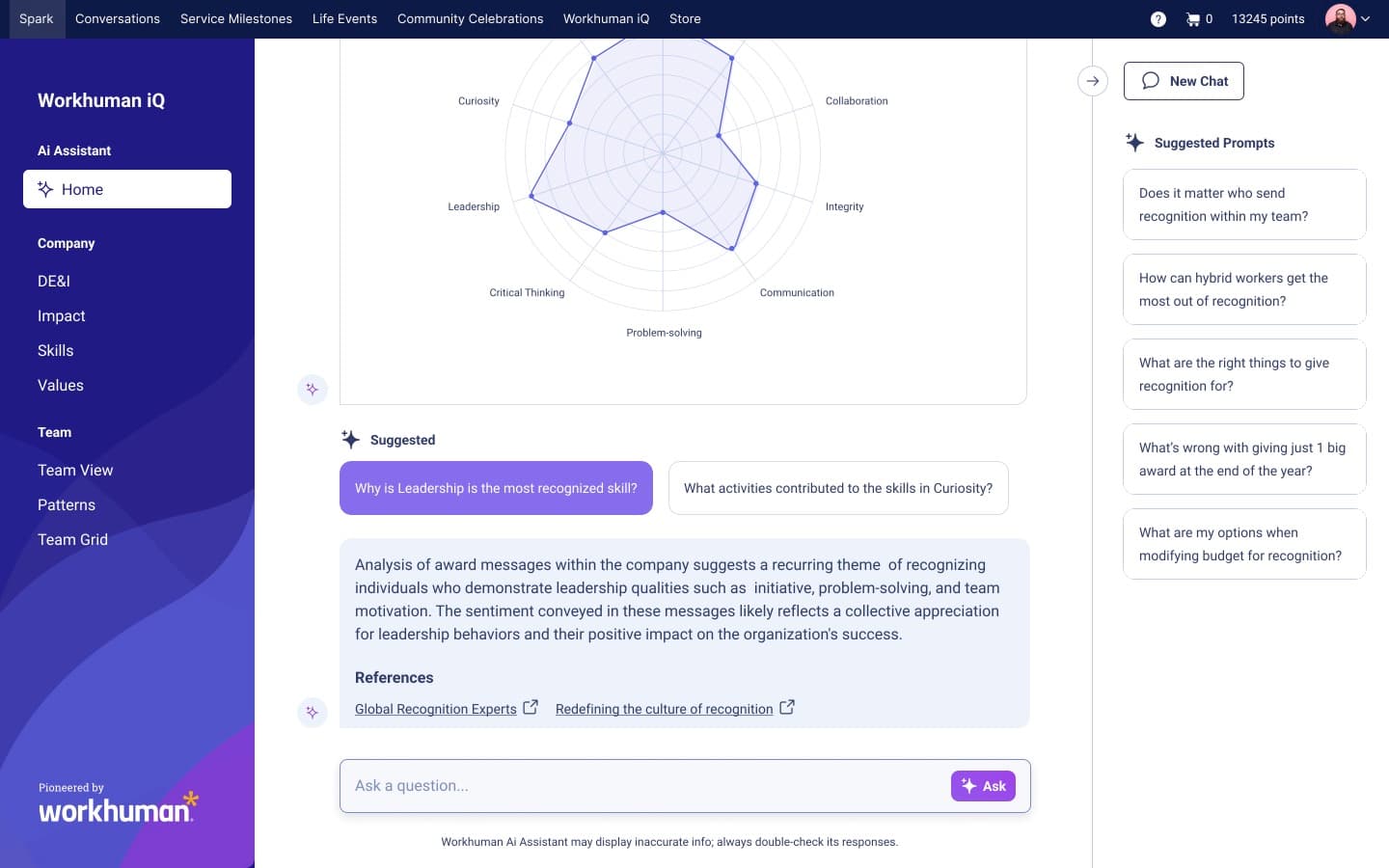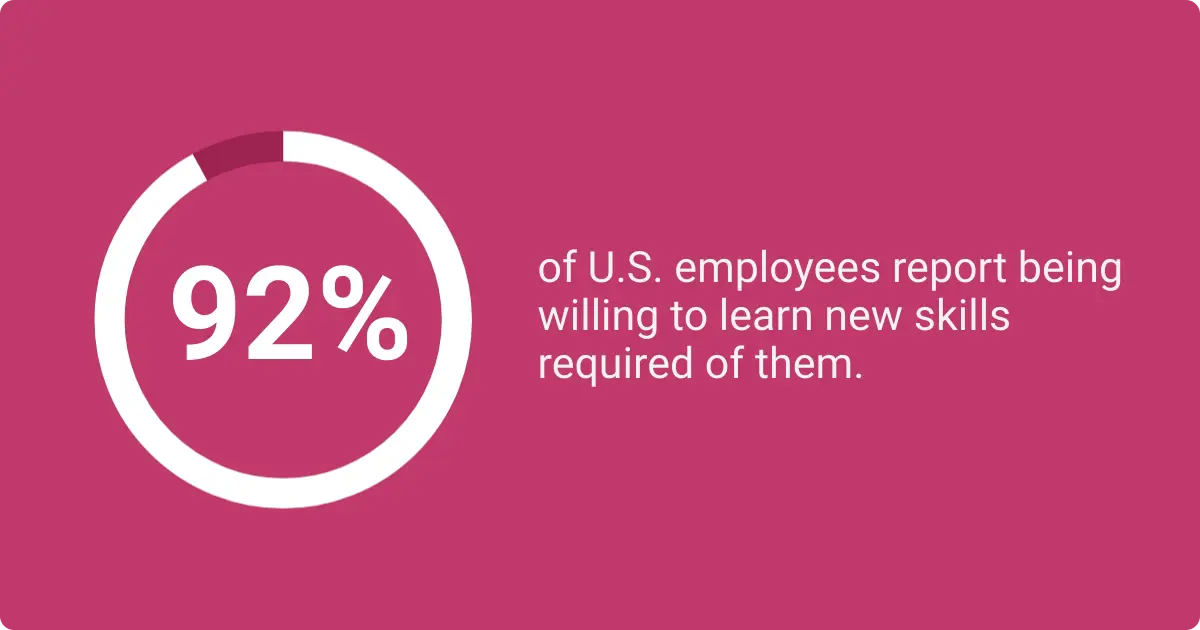Bridging the Skills Gap: How to Identify and Fix Your Employees’ Skill Deficiencies

The skills gap is at the top of work leaders’ minds worldwide. As many as 82% of companies identified skills as a priority in 2024, according to Aptitude Research. And there’s a good reason for that: 61% of U.S. employees say the skills required for their jobs have changed since the pandemic.
Those changes include greater tech/digital skills (79%), greater adaptability (69%), and greater non-cognitive skills such as communication, planning, and teamwork (55%).
What’s more: 24% of employees in Ireland say they are being slowed down because they have to provide a lot of support to those colleagues.
In short, the skills gap is real – and it’s time to do something about it.
Let’s explore the skills gap, why it exists, and what you can do about it.
What is a skills gap?
Employee skill gaps are areas where a worker lacks either critical or basic skills needed to fulfill their role. This can include soft skills, like teamwork and active listening, or hard skills, like technical proficiency or project management.
According to The Association for Talent Development on skill gapOpens in a new tab, the three most common skills gaps among employees are:
- Communication and interpersonal skills
- Critical thinking and problem-solving skills
- Managerial and supervisory skills
You might be looking at this list and thinking: Those are all critical skills. And you’d be right!
Existing skills gaps are plaguing workplaces worldwide, with as many as 70% of employees in Ireland saying they work with one or more people whose skill sets do not meet the criteria of the role.

Learn more about identifying skills gaps with Workhuman's future-proof workforce series: EP. 1 of 3: “Recognize the Skills Gap: Retraining to Retain Talent and Culture.”
Almost all workers need to be able to collaborate, communicate, and think critically. On top of that, anyone in a managerial role needs to have interpersonal skills.
Other roles demand negotiation, selling and marketing, and technical skills.
When these skills gaps exist, both workers and organizations alike suffer. An individual’s skills gap leads to poor performance, which is often linked to lower engagement and satisfaction.
For employers, this can spell disaster, with a disengaged workforce at best and an incompetent team at worst.
There has been an explosion of new technologies in recent years… In turn, roles and job requirements across artificial intelligence, eCommerce, information security, data, video communications, user experience, and more have grown enormously, and we are left to play catch-up. Companies need to rethink their hiring, skills, and talent development strategies.
The current state of the skills gap
Based on Workhuman research in the UK, there is a disconnect between what skills employees need and what they currently know.
A shocking 86% of workers plan to learn a new skill, with the driving motivating factor being new job opportunities. Workers know that the more robust their skill set is, the more attractive they are to an organization.
More than half of those pursuing new skills are doing so because they want a raise or promotion, while 50% are simply trying to do their current jobs better.
So while 78% of UK employees feel confident in their skills and almost as many say their workplace provides helpful training, almost two-thirds say they work with at least one person who lacks the necessary skills for their role.
This disconnect indicates a gap between perception and reality, with employees seemingly perceiving everyone but themselves as the problem. As such, employers need to take a more proactive approach to their internal educational system and training opportunities to ensure consistency across the whole workforce.
Why do skill gaps happen?

A gap between the skills needed for a job and the actual skills employees possess happens for a myriad of reasons: poor training or hiring practices, insufficient headcount, general oversight, and so on.
Absent managers add to the problem. When managers aren’t keeping a close eye on the inner workings of their team, taking time to develop talent internally, and keeping an eye out for knowledge gaps, these issues can arise undetected.
Managers should encourage and support continuous training and educational programs for their employees to ensure all team members are up to the job.
HR departments also play a role in mitigating the skills gap. Human resources need to include accurate job descriptions when filling open positions and focus on assessing skills thoroughly in potential candidates to ensure whoever is hired possesses the requisite skills.
Skills gaps also occur when employees are stretched too far past their original job descriptions. Someone who was hired for a creative role and is now expected to report on analytics will likely not have the required skills to navigate that successfully.
If an employee’s role needs to evolve, their training and education need to evolve along with it. Otherwise, this mismatch makes for unproductive teams, struggling employees, and a dissatisfied workforce.
How to identify skills gaps
Now that you understand more about skills gaps and where they come from, how can you identify them?
Skills profiles
Skill gap analysis does exist, and it starts with running a skills profile for your employees. These profiles account for:
- Hard skills: These are measurable (and teachable!) skills that pertain to certain tasks. These overlap with technical skills.
- Soft skills: These abilities center around teamwork and communication. They aren’t measurable, per se, but they are often strongly felt by those working with any given individual.
- Technical skills: This accounts for knowledge in areas like IT or engineering for skilled employees in more specialized positions.
- Transferable skills: Versatile abilities such as problem-solving and adaptability are applicable across different job roles.
These profiles aren’t a one-and-done. Rather, they should be continuously updated annually to account for any role changes so that you can identify a potential skill gap before it emerges.
Skill gap surveys
In the next phase of the skill gap analysis, interface with your employees directly to see what they feel is lacking in their own skillset or in others’. You can ask questions like:
- What skills do you feel you lack, or what tasks do you have trouble completing?
- What skills do you feel your co-workers lack?
- What skills do you feel your manager(s) lack?
- For managers: what skills do you feel your team members lack?
- What skills do customers feel our team members lack (based on feedback)?
Workhuman’s new AI AssistantOpens in a new tab can help automate and streamline much of this analysis by tracking skills profiles and giving managers a quick overview of their team members as needed.
AI Assistant can also make smart suggestions based on these skills profiles when it comes time to consider someone for a promotion or find someone for a particular project. You can ask things like, “Who on my team is qualified for X?” or “Who has the best interpersonal skills?”

By using your organization’s data, AI Assistant makes intelligent, bias-free suggestions to help you fill open positions and prevent skills gaps.
How to prevent skills gaps
Avoiding the skills gap requires planning. Avoiding the skills gap requires planning. A well-structured skills taxonomy can guide training efforts, and offering continuing education is one of the most surefire ways to prevent skills gaps.
Developing a robust training program for onboarding employees is a great way to start employees off on the right foot. It will set them up for success with the skills they need to perform at a high level, and it will show them that your organization values training. This makes team members feel supported as they integrate into their company.
In the age of automation and AI, it’s more important than ever to embrace new technologies rather than resist. Skills gaps emerge when organizations refuse to evolve along with new tools and approaches.
Read more: Understanding the Skill Will Matrix: Definition, Benefits, and How to Use It Effectively
Mitigate the skills gap with upskilling

Upskilling is also crucial. With so many new emerging technologies and an ever-evolving work landscape, the list of needed skills changes almost daily.
Here’s the good news: employees are ready and willing to upskill. 92% of U.S. employees report being willing to learn new skills required of them. There’s no need to jump to hire a new person without first prioritizing internal training. Upskilling and reskilling the workforce can effectively address skills shortages.
Reinforce the value of upskilling with Workhuman’s Social Recognition to reward these efforts. Recognizing employees for taking time to take on new training and educational programs shows that your organization values continued education. Employees then have a positive association with such training and know that they will be supported in taking them on.
Workhuman is the #1 provider of employee recognition software. When you opt for recognition done right from Workhuman, you don't have to settle for second-rate recognition.
Benefits of upskilling
Upskilling is one of the best ways to future-proof your team against shifting market and consumer demands. By filling skill gaps, you foster a more robust workforce, effectively improving business outcomes in the process.
Employees are also more likely to stick around when continuous education and upskilling is encouraged. It makes them feel supported in their talent development and indicates that the company values their current employees. This also boosts your overall talent retention.
This also builds a stronger internal promotion track. With more skilled employees, you have more skilled options for senior-level roles who know themselves how to address the skills gap because they have lived experience.
Conclusion
While the skills gap is undeniably a pressing issue for companies worldwide, the good news is that it’s a solvable issue. With a thoughtful onboarding process and generous continuous education opportunities, workforces can be fortified to be more skilled and agile than ever before.
And with Workhuman’s AI Assistant, it’s easier than ever to identify opportunities to close skill gaps and build a more skilled team. Learn more about Workhuman’s platform now.
Close the skills gap and build a workplace where people thrive with the Workhuman platform. Find out how with Workhuman's people solutions.
About the author
Maeve Ginsberg
A wellness enthusiast and the mid-day walk’s #1 fan, Maeve champions work-life balance.
Having gone from a corporate job to self employment, Maeve has lived through countless working styles. This evolution forced confrontation of her own limiting beliefs, eventually breeding a completely individualized approach to work and productivity.
As a Senior Copywriter, Maeve often writes on workplace wellbeing and strives to advocate for all workers and leaders to find small yet significant ways to make their work lives healthier and more fulfilling.
Offline, Maeve enjoys testing new cuisines and hanging upside down off walls (also known as bouldering).